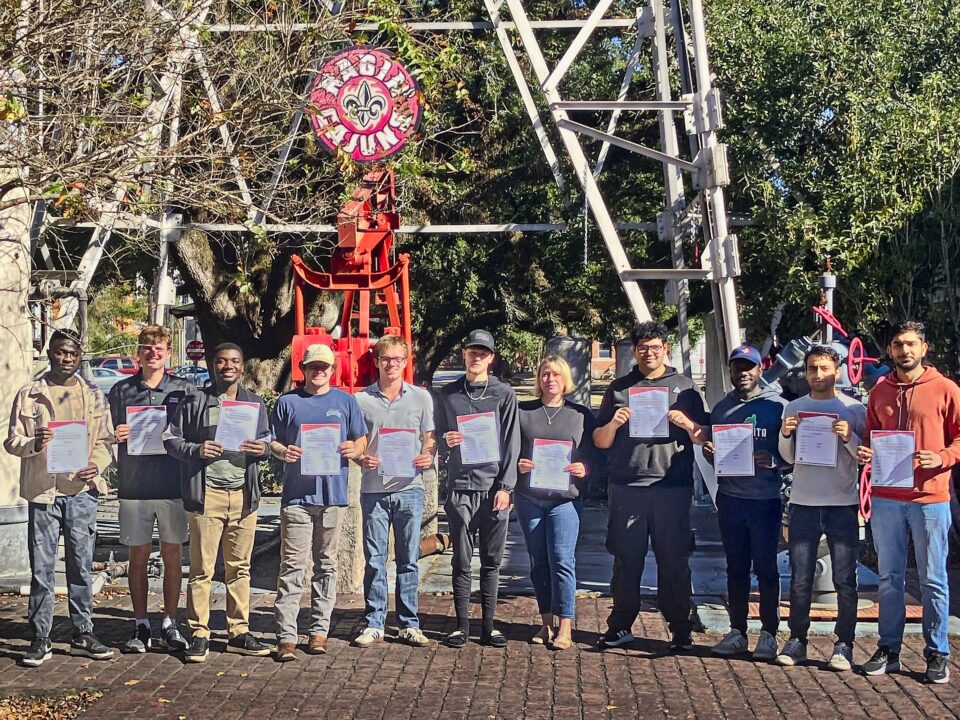In the video below, Fred Growcock of the IADC Technical Publications Committee interviews author Subhash Shah about his new book, Fundamentals of Horizontal Wellbore Cleanout: Theory and Applications of Rotary Jetting Technology.
The IADC Technical Publications Committee is proud to celebrate the publication of Fundamentals of Horizontal Wellbore Cleanout. This book is the 11th in its “Drilling Encyclopedia” portfolio. This 252-page drilling guide was authored by Xianzhi Song, Gensheng Li, Zhengming Xu, and Subhash Shah, and published by Gulf Professional Publishing, an imprint of the Dutch technical publishing company Elsevier.
About the Committee’s Wellbore Book
Fundamentals of Horizontal Wellbore Cleanout: Theory and Applications of Rotary Jetting Technology covers the most effective tools and emerging technologies in horizontal wellbores, giving today’s petroleum and drilling engineers alternative methods to hole cleaning in horizontal wells.
According to Committee Chair, Fred Growcock,“ We’re expanding our focus on well construction in oil and gas operations. Our previous book covered Workover Recompletions, so this latest textbook discusses the latest methods regarding effective sand clean-out tools.”
About the Authors
-
Dr. Subhash Shah is professor emeritus at the University of Oklahoma and the fellow of American Institute of Chemical Engineers (AIChE). He has been working in the petroleum industry for over 40 years and specializes in well completion, hydraulic fracturing, and coiled tubing flow. Dr. Shah has authored or coauthored more than 300 technical papers in 30 international journals. He holds a bachelor’s degree from the University of Baroda, India, and master’s and PhD degrees from the University of New Mexico, all in chemical engineering. Shah is a Lifetime Member of SPE, a 2012-2013 SPE Distinguished Lecturer, and the recipient of the 2009 SPE Mid-Continent Region Completions Optimization and Technology Award.
- Dr. Zhengming Xu is a lecturer in the Department of Petroleum Engineering at the China University of Geosciences at Beijing (CUGB). His research interests include gas kick simulation, wellbore multiphase flow, cuttings transport, and particle settling. Xu holds a PhD degree in oil & gas well engineering from the China University of Petroleum, Beijing. He is a member of SPE.
- Dr. Xianzhi Song is the Professor of College of Petroleum Engineering and the Vice Dean of College of Artificial Intelligence, China University of Petroleum at Beijing (CUPB). He is also the Vice Director of CUPB Geothermal Research Center, and the Director of CNPC Key Laboratory of Drilling Engineering, etc. He has obtained the National Natural Science Funds for Excellent Young Scholars of China, the Awards of Science and Technology for the Excellent Youth by Sun Yue-Qi Foundation, and National Excellent Doctoral Dissertation. His research areas involve drilling and completion, geothermal exploitation, and artificial intelligence. He has authored more than 50 papers and earned 20 patents. He received his B.S degree in petroleum engineering from China University of Petroleum at East China and PHD degree in oil and gas well drilling engineering of CUPB in 2010.
- Dr. Gensheng Li is the Academician of Chinese Member of Engineering and the Vice President of China University of Petroleum at Beijing (CUPB). He has over 30 years of experience concentrating on the research and application of water jet technology in drilling and well completion. His research interests include water jet assisted drilling within HPHT Wells, abrasive jet perforation and multistage fracturing, and unconventional oil and gas well drilling and completion. He received the National Award for Technological Invention in 2012 and the National Award for Science and Technology Progress in 2007 as a principle investigator.
Key Features of the Book
The book provides the most relevant information on hole cleaning including details on sand bed formations, sand settling velocity, and friction and hydraulics. The book also includes the following:
- Presentation of flowcharts, methods, and field studies to help readers develop cost-saving strategies and optimal performance.
- Help for users building their own models using the experimental data provided.
- Information on how to build research and operation capabilities by providing extensive literature reviews and references.
- Illustrative case studies including clean-out with varying nozzle assemblies leading to optimum design on operation procedures, bottomhole assembly, and other lessons learned from known field experience.
- Future research on cost-saving strategies including CO2 used as a washing fluid in water-sensitive formations.
Textbook Teamwork
Fundamentals of Horizontal Wellbore Cleanout was only possible with the joint effort of the volunteer working group. The working group wrote, edited, and revised the textbook until its detailed sections were correct, clear, and concise. These sections include the settling characteristics of sand, how the sand particles’ shape and size affect drag coefficients, and prediction models of sand concentrations, among others.
“Reviewing this book opened my eyes,” said John Gammage, a 40-year industry vet working as an “engineering driller.”
Guillaume Plessis, another volunteer reviewer, described that the expertise captured in the book “includes a comprehensive analysis of the varying parameters that influence the efficiency of a wellbore clean-out operation.”
Plessis, Director of Product Management and Support at NOV Wellbore Technologies, continued:
How You Can Help
“We’re always looking for volunteers to help write, review and edit,” said Growcock. “The Technical Publication Committee books address the industry needs of all interested individuals, ranging from students to field personnel and managers and even lay persons. We like having that diversity involved in the collaborative creation process too.”
Want to get involved in the Technical Publications Committee? Reach out to Technical Publications Committee Liaison, Bill Krull, at bkrull@iadc.org.




